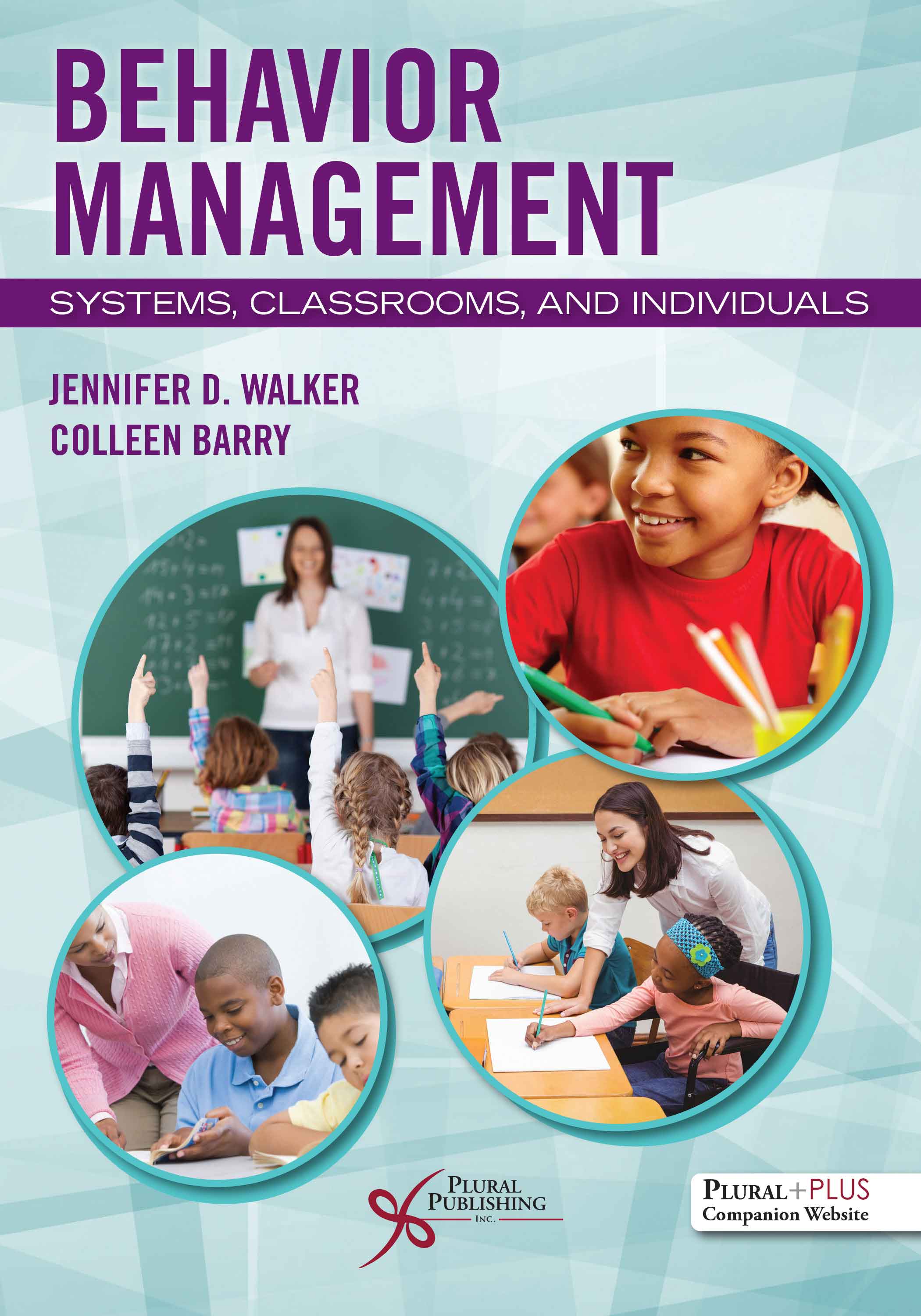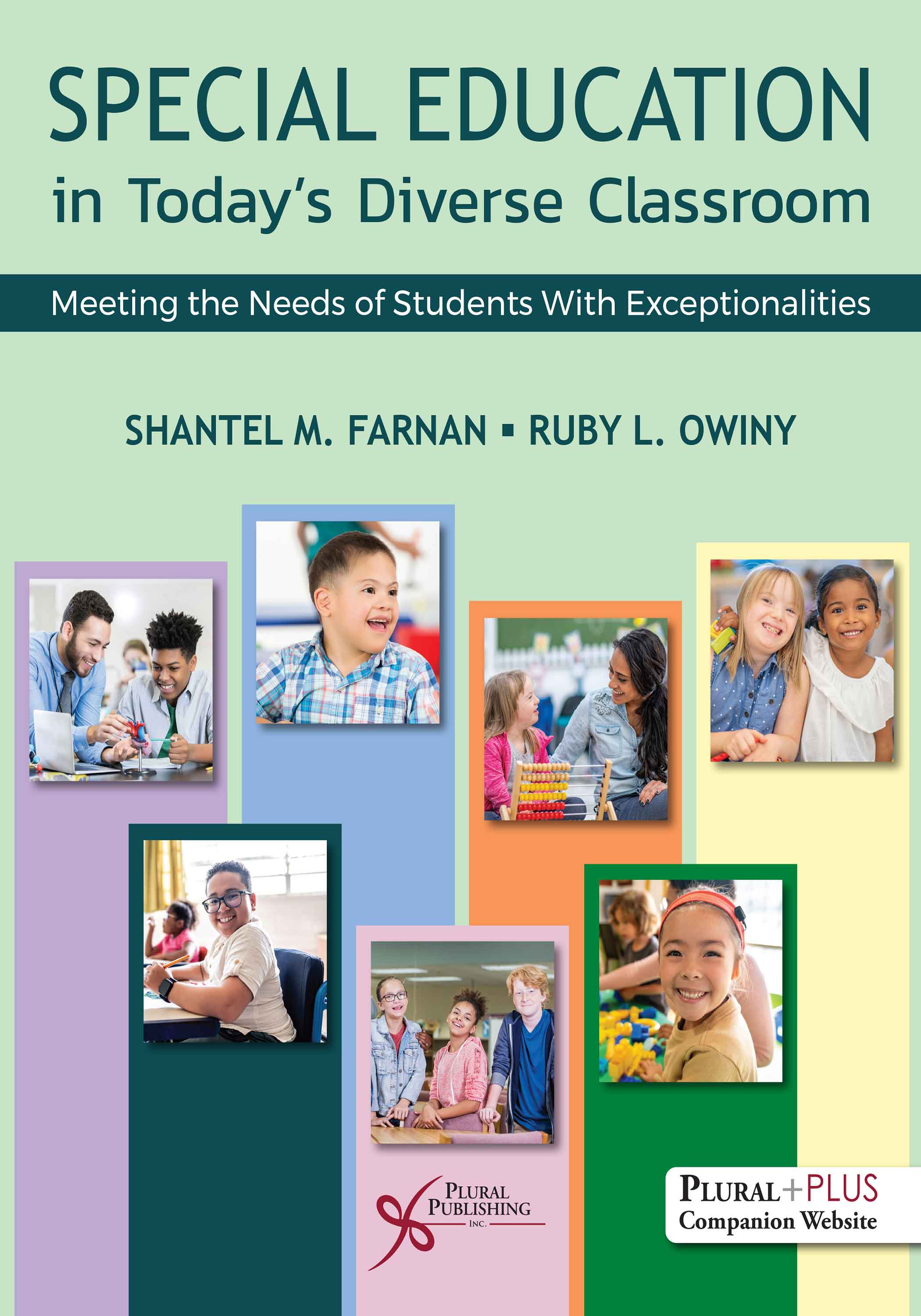
Teaching Students with Emotional and Behavioral Disabilities
First Edition
Brittany L. Hott, Kathleen M. Randolph, Lesli Raymond
Details: 397 pages, Two-Color, Softcover, 7" x 10"
ISBN13: 978-1-63550-225-1
© 2022 | Available
For Instructors
Purchase
Teaching Students with Emotional and Behavioral Disabilities provides a comprehensive resource for preservice and in-service educators to teach and support academic, social, and behavioral development. The text focuses on implementation of evidence-based interventions, strategies, and practices. Dedicated chapters address quality service delivery models including individual, classroom, and school-wide supports. In addition, academic intervention chapters concentrate on reading, mathematics, writing, and study skills. Finally, the book includes step-by-step directions for conducting Functional Behavior Assessments (FBA), developing Behavior Intervention Plans (BIP), and monitoring student progress. The book will serve as a valuable reference for educators supporting students with challenging behaviors.
Key Features
- Case studies written by PreK-12 practitioners based on their experiences supporting students with emotional and behavioral disorders
- Numerous worksheets and examples to support implementation of evidence-based practices
- Accessible and consistent format across all chapters
- Pedagogical aids reinforce understanding: chapter objectives, key terms, chapter summaries, discussion questions, and lists of additional resources and readings
- A PluralPlus companion website with instructor resources including PowerPoints, test banks, and sample class activities and student resources including links to videos, online learning modules, and printable forms
Review
"Expertly written, organized and presented, Teaching Students with Emotional and Behavioral Disabilities will serve as a valuable reference for educators supporting students with challenging behaviors and is an especially and unreservedly recommended addition to school district, college and university library Teacher Education and Classroom Management collections and supplemental studies curriculum reading lists."
—Library Bookwatch (May 2021)
Preface
Acknowledgements
Contributors
Reviewers
Chapter 1. Teaching Students with Emotional and Behavioral Disabilities
Key Vocabulary
Learning Objectives
Introduction
Social Maladjustment
Comorbidity/Comorbid Disabilities
Learning Disability
Autism Spectrum Disorder
Attention-Deficit/Hyperactivity Disorder
Intellectual Disability
Communication Disorders
Rationale for Inclusive Education
Evidence-Based Practices
Disproportionality
Disproportionality versus Overrepresentation
Determining Disproportionality
Theories Behind Disproportionality
Risk Factors
Federal Laws
Educational Placement
Impact of EBD
Recommendations to Address Disproportionality
Culturally Responsive Teaching
Implementation of RtI Practices
Universal Screening
Classroom Contexts
Chapter Summary
Discussion Questions
Resources
Evidence Based Practices
Person-First Language
Calculating Disproportionality
Determining Social Maladjustment
References
Chapter 2. Educating Students with EBD within Schoolwide Systems of Support
With Contributions from Jennifer Sears
Key Vocabulary
Learning Objectives
Introduction
Differentiated Instruction
Implementing Differentiated Instruction
Universal Design for Learning
Engagement
Representation
Action and Expression
Implementing UDL
Differentiated Instruction and Universal Design for Learning
Response to Intervention
Tier 1 – Core Instruction
Tier 2 – Targeted Support
Tier 3 – Intensive Intervention
Child Study
Positive Behavioral Interventions and Supports
Tier 1
Tier 2
Tier 3
Chapter Summary
Discussion Questions
Resources
References
Appendicies
Chapter 3. Service Delivery
Key Vocabulary
Learning Objectives
Introduction
What Drives Services for Students with EBD?
Free and Appropriate Public Education
Least Restrictive Environment
Service Delivery Options
Inclusion
Co-Teaching
Resource Room
Center-Based Schools
Specially Designed Instruction
Classroom Management
Related Services for Students with EBD
Speech-Language Pathology
Physical and Occupational Therapy
Counseling Services
Mental Health Services
Related Legislation
Family Involvement in the IEP and Service Delivery Process
Barriers to Collaboration with Parents
Communication with Parents Beyond the IEP
Proportional Approaches to Service Delivery
Case Study–Elementary
Case Study–Secondary
Chapter Summary
Discussion Questions
Resources
References
Appendicies
Chapter 4. Mathematics Strategies and Interventions
Key Vocabulary
Learning Objectives
Introduction
Challenges in Teaching Math to Students with EBD
Case Study–Secondary
Components of Effective Math Instruction for Students with EBD
Direct, Explicit, and Systematic
CRA Sequence
Daily Review and Repeated Practice
Scaffolded Support
Verbal Responses
Choral Responses
Think-Pair-Share
Nonverbal Responses
Written Responses
Guided Notes
Pair and Write and Peer Guided Pause
Chalk Talk
Action Responses
Touching
Pointing
Hand Signals
Case Study
Math Interventions and Strategies for Students with EBD
Basic Numeracy Interventions and Strategies
Computation and Math Fact Fluency Interventions and Strategies
Self-Mediated Interventions and Strategies
Checklists
Self-Evaluation/Self-Instruction
Errorless Learning Worksheet
Cover-Copy-Compare
Taped Problems
Folding-In Technique
Peer-Mediated Interventions and Strategies
Teacher-Mediated Interventions and Strategies
Mnemonics
Computer-Assisted Instruction
Problem Solving Interventions and Strategies
Using and Connecting Visual Representations
Mnemonics
Metacognitive Strategies
Schema-Based Instruction
QAR Strategy
Enhanced Anchored Instruction
Algebra and Geometry Interventions and Strategies
Mnemonics
Chapter Summary
Discussion Questions
Resources
References
Appendicies
Chapter 5. Writing Interventions
With Contributions from Nelly Kaakaty
Key Vocabylary
Learning Objectives
Introduction
Self-Regulated Strategy Development
Persuasive Writing
POW+TREE
Goal Setting and Self-Regulation
Expository Writing
Writing in Content Areas
Journal Writing
Learning Logs
Narrative Writing
Case Study
Descriptive Writing
Chapter Summary
Discussion Questions
Resources
References
Appendicies
Chapter 6. Reading Strategies and Interventions
Key Vocabulary
Learning Objectives
Introduction
Challenges in Teaching Reading to Students with EBD
Case Study
Components of Effective Reading Instruction for Students with EBD
Peer Mediated Interventions
Reading Interventions and Strategies for Students with EBD
Strategies and Interventions for Alphabetics
Phonemic Awareness
Phonological Awareness
Phonological Awareness Training for Reading
Stepping Stones to Literacy
K- and First-Grade PALS
Phonics
Multi-Sensory Instruction
Peer-Assisted Learning Strategies
Systematic Instruction in Phonological Awareness, Phonics, and Sight Words
Strategies and Interventions for Fluency
Repeated Reading
Choice with Antecedent Instruction and Reward
Corrective Reading
Peer-Assisted Learning with Self-Graphing
Great Leaps
Helping Early Literacy with Practice Strategies
Read Naturally
Strategies and Interventions for Comprehension
Vocabulary
Text Comprehension
Story Mapping
TWA-WS
Miscellaneous Strategies and Interventions
Read 180
SELF
Sonday System
Chapter Summary
Discussion Questions
Resources
References
Appendicies
Chapter 7. Study Skills
Key Vocabulary
Learning Objectives
Introduction
Explicit Instruction
Time On-Task
Success
Content
Instructional Grouping
Scaffolding
Knowledge
Teaching and Learning Routines
Setting Goals
Teaching Students How to Study
Notecards
Note Taking
Study Groups
Strategy Instruction
Evidence-Based Practices
Learning Styles – A Myth
Case Study–Elementary
Case Study–Secondary
Chapter Summary
Discussion Questions
Resources
References
Chapter 8. Teacher-Directed Behavioral Interventions
With Contributions from Brianna Joseph
Key Vocabulary
Learning Objectives
Introduction
Data Collection
Formal Assessments
Antecedent-Behavior-Consequence
Positive Behavioral Interventions and Supports
Replacement Behaviors
Environmental Arrangements
Classroom Expectations
Procedures and Routines
Behavior Contracts
Behavior Specific Praise
Opportunities to Respond
Negative Reinforcement
Levels of Reinforcement
Extinction
Punishment
Response Cost
Time-Out
Token Systems
Group Contingencies
Case Studies
Case Study–Elementary
Case Study– Secondary 1
Case Study–Secondary 2
Chapter Summary
Discussion Questions
Resources
References
Appendices
Chapter 9. Student-Directed Behavioral Interventions
With Contributions from Lauren Berlingo
Key Vocabulary
Learning Objectives
Introduction
Self-Management
Emotion Identification
Elementary
Charts
Traffic Light Strategy
Emotion Regulation
Choice Board
Hot Card
Whoops! Card
Pass
Positive Self-Talk
Self-Monitoring
Tracking System
Check-In, Check-Out
Goal Setting
Case Study–Elementary
Case Study–Secondary
Chapter Summary
Discussion Questions
Resources
References
Appendicies
Chapter 10. Peer-Directed Behavioral Interventions
With Contributions from Kelly B. Kearney
Key Vocabulary
Learning Objectives
Introduction
Social Skills
Advantages of Peer-Directed Behavioral Interventions
Types of Peer-Directed Behavioral Interventions
Peer Modeling
Peer Initiation Training
Video Modeling
Peer Tutoring
Peer Assisted Learning Strategies (PALS)
Literacy Based Behavioral Intervention (LBBI)
I’ve Picked a Peer-Directed Behavioral Intervention - Now What?
Case Study
Chapter Summary
Discussion Questions
Resources
References
Appendicies
Chapter 11. Functional Behavior Assessment
With Contributions from Sarah Heiniger
Key Vocabulary
Learning Objectives
Introduction
Case Study–Elementary
What Makes a Good FBA?
Case Study–Secondary
The Functional Assessment Process
Gathering Information
Case Study – Elementary – Record Review
Case Study – Secondary – Record Review
Case Study – Elementary – Interview
Case Study – Secondary – Interview
Writing the FBA
Observable and Measurable
Evaluate the FBA
How to Read an FBA
Case Study – Elementary – Function
Case Study – Secondary – Function
Chapter Summary
Discussion Questions
References
Appendicies
Chapter 12. Behavior Intervention Planning
With Contributions from Sarah Heiniger
Key Vocabulary
Learning Objectives
Introduction
Plan Development
Social Validity
Summarize the FBA
Case Study – Elementary – FBA Summary
Case Study – Secondary – FBA Summary
Starting the BIP Process
Example of Competing Behavior Pathway Completed for Xavier
Acceptable Alternatives to the Problem Behavior
Hypothesis Testing
Intervention
Planning
Problem Behavior Reduction Strategies
Differential Reinforcement
DRO
DRA and DRI
DRL
Case Study – Elementary – Differential Reinforcement
Case Study – Secondary – Differential Reinforcement
Introduction to Replacement Behavior
Schedules of Reinforcement
Case Study – Elementary – Replacement Behavior Plan
Writing Goals
Case Study – Elementary – Goals
Plan Implementation
Monitoring Progress
Plan Evaluation
Chapter Summary
Discussion Questions
References
Appendices
Chapter 13. Progress Monitoring: Assessment and Measurement
With Contributions from Wilhelmina Van Dijk and Nicolette M. Grasley-Boy
Key Vocabulary
Learning Objectives
Introduction
Case Study
Collecting Behavioral Data
Direct Observation of Specific Behaviors
Benefits
Barriers
Daily Behavior Report Cards
Benefits
Barriers
Norm-Referenced Rating Scales and Permanent Products
Benefits
Barriers
Examples of Behavioral Data Collection Systems
Paper and Pencil
Daily Behavior Report Cards
Electronic
Academic Progress
Standardized Tests: Norm-Referenced Tests and Computer Adaptive Testing
Norm-Referenced Tests
Computer Adapted Tests
Curriculum-Based Measures
Implementation Fidelity
Observation of Implementation Fidelity
Direct Assessment
Indirect Assessment
What Type of Data to Collect?
Choosing Implementation Fidelity Measures
Existing Measures
Making Your Own Measures
Graphing Progress Monitoring Data
Manual Graphing
Electronic Graphing
Chapter Summary
Discussion Questions
References
Appendices
Index
Teaching Students with Emotional and Behavioral Disabilities comes with access to supplementary student and instructor materials on a PluralPlus companion website.
STUDENTS:
To access the student materials, you must register on the companion website and log in using the access code printed on the inside front cover of your book.
INSTRUCTORS:
To access the instructor materials, you must contact Plural Publishing, Inc. to be verified as an instructor and receive your access code.
Email: instructormaterials@pluralpublishing.com
Tel: 866-758-7251 (toll free) or 858-492-1555
*Note for students: If you have purchased this textbook used or have rented it, your access code will not work if it was already redeemed by the original buyer of the book. Plural Publishing does not offer replacement access codes for used or rented textbooks.

Educating Students with Autism Spectrum Disorder: A Model for High-Quality Coaching
First Edition
Joshua K. Harrower, Louis G. Denti, Marcia Weber-Olsen
Details: 245 pages, B&W, Softcover, 7" x 10"
ISBN13: 978-1-59756-786-2
© 2016 | Available

Behavior Management: Systems, Classrooms, and Individuals
First Edition
Jennifer D. Walker, Colleen Barry
Details: 381 pages, 2-Color, Softcover, 8.5" x 11"
ISBN13: 978-1-63550-224-4
© 2022 | Available

Special Education Law and Policy: From Foundation to Application
First Edition
Jacqueline A. Rodriguez, Wendy Murawski
Details: 567 pages, 2-Color, Softcover, 7" x 10"
ISBN13: 978-1-63550-231-2
© 2022 | Available

Special Eduation in Today's Diverse Classrooms: Meeting the Needs of Students With Exceptionalities
First Edition
Shantel M. Farnan, Ruby L. Owiny
Details: 350 pages, Full Color, Softcover, 8.5" x 11
ISBN13: 978-1-63550-750-8
© 2026 | Coming Soon
Release Date: 09/01/2025



